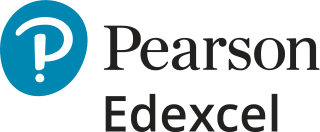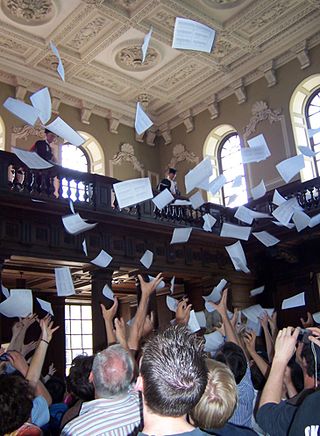Related Research Articles

Baron Augustin-Louis Cauchy was a French mathematician, engineer, and physicist who made pioneering contributions to several branches of mathematics, including mathematical analysis and continuum mechanics. He was one of the first to state and rigorously prove theorems of calculus, rejecting the heuristic principle of the generality of algebra of earlier authors. He almost singlehandedly founded complex analysis and the study of permutation groups in abstract algebra.

Euclid was an ancient Greek mathematician active as a geometer and logician. Considered the "father of geometry", he is chiefly known for the Elements treatise, which established the foundations of geometry that largely dominated the field until the early 19th century. His system, now referred to as Euclidean geometry, involved new innovations in combination with a synthesis of theories from earlier Greek mathematicians, including Eudoxus of Cnidus, Hippocrates of Chios, Thales and Theaetetus. With Archimedes and Apollonius of Perga, Euclid is generally considered among the greatest mathematicians of antiquity, and one of the most influential in the history of mathematics.

Yale University is a private Ivy League research university in New Haven, Connecticut. Founded in 1701, Yale is the third-oldest institution of higher education in the United States and one of the nine colonial colleges chartered before the American Revolution. It is one of the most prestigious and highly-ranked universities in the world.

Josiah Willard Gibbs was an American scientist who made significant theoretical contributions to physics, chemistry, and mathematics. His work on the applications of thermodynamics was instrumental in transforming physical chemistry into a rigorous inductive science. Together with James Clerk Maxwell and Ludwig Boltzmann, he created statistical mechanics, explaining the laws of thermodynamics as consequences of the statistical properties of ensembles of the possible states of a physical system composed of many particles. Gibbs also worked on the application of Maxwell's equations to problems in physical optics. As a mathematician, he invented modern vector calculus.

Matura or its translated terms is a Latin name for the secondary school exit exam or "maturity diploma" in various European countries, including Albania, Austria, Bosnia and Herzegovina, Bulgaria, Croatia, Czechia, Hungary, Italy, Kosovo, Liechtenstein, Montenegro, North Macedonia, Poland, Serbia, Slovakia, Slovenia, Switzerland and Ukraine.

A blackboard is a reusable writing surface on which text or drawings are made with sticks of calcium sulphate or calcium carbonate, known, when used for this purpose, as chalk. Blackboards were originally made of smooth, thin sheets of black or dark grey slate stone.
Numerus clausus is one of many methods used to limit the number of students who may study at a university. In many cases, the goal of the numerus clausus is simply to limit the number of students to the maximum feasible in some particularly sought-after areas of studies with an intent to keep a constant supply of qualified workforce and thus limit competition. In historical terms however, in some countries, numerus clausus policies were religious or racial quotas, both in intent and function.

Edexcel is a British multinational education and examination body formed in 1996 and wholly owned by Pearson plc since 2005. It is the only privately owned examination board in the United Kingdom. Its name is a portmanteau term combining the words education and excellence.

University College School, generally known as UCS, is an independent day school in Frognal, Hampstead, northwest London, England. The school was founded in 1830 by University College London and inherited many of that institution's progressive and secular views.

Tenpō (天保) was a Japanese era name after Bunsei and before Kōka. The period spanned from December 1830 through December 1844. The reigning emperor was Ninko-tennō (仁孝天皇).

Grace Hopper College is a residential college of Yale University, opened in 1933 as one of the original eight undergraduate residential colleges endowed by Edward Harkness. It was originally named Calhoun College after US Vice President John C. Calhoun, but renamed in 2017 in honor of computer scientist Grace Murray Hopper. The building was designed by John Russell Pope.
Further Mathematics is the title given to a number of advanced secondary mathematics courses. The term "Higher and Further Mathematics", and the term "Advanced Level Mathematics", may also refer to any of several advanced mathematics courses at many institutions.

The Mathematical Tripos is the mathematics course that is taught in the Faculty of Mathematics at the University of Cambridge. It is the oldest Tripos examined at the university.

Study skills or study strategies are approaches applied to learning. Study skills are an array of skills which tackle the process of organizing and taking in new information, retaining information, or dealing with assessments. They are discrete techniques that can be learned, usually in a short time, and applied to all or most fields of study. More broadly, any skill which boosts a person's ability to study, retain and recall information which assists in and passing exams can be termed a study skill, and this could include time management and motivational techniques.

Mark Hopkins was an American educator and Congregationalist theologian, president of Williams College from 1836 to 1872. An epigram — widely attributed to President James A. Garfield, a student of Hopkins — defined an ideal college as "Mark Hopkins on one end of a log and a student on the other".

Alfred Stillé was an American physician.
Math 55 is a two-semester long freshman undergraduate mathematics course at Harvard University founded by Lynn Loomis and Shlomo Sternberg. The official titles of the course are Studies in Algebra and Group Theory and Studies in Real and Complex Analysis. Previously, the official title was Honors Advanced Calculus and Linear Algebra.

The ICFESexamination, or Saber 11, is a high school exit examination administered annually in grade 11 in Colombian high schools. The exam is standardized, similar to the SAT and ACT examinations taken by high school students in the United States. The purpose of the exam is to evaluate students' aptitude in five subjects: critical reading, mathematics, social studies, science, and English. Each exam question has four multiple-choice answers, except for the English section which provides between three and eight possible answers for each question.
Rev Henry Parr Hamilton FRS FRSE was a Scots-born clergyman and mathematician, who was Dean of Salisbury for 30 years.
A mathematical exercise is a routine application of algebra or other mathematics to a stated challenge. Mathematics teachers assign mathematical exercises to develop the skills of their students. Early exercises deal with addition, subtraction, multiplication, and division of integers. Extensive courses of exercises in school extend such arithmetic to rational numbers. Various approaches to geometry have based exercises on relations of angles, segments, and triangles. The topic of trigonometry gains many of its exercises from the trigonometric identities. In college mathematics exercises often depend on functions of a real variable or application of theorems. The standard exercises of calculus involve finding derivatives and integrals of specified functions.
References
- ↑ TIMELINE OF SELECTED EVENTS IN THE HISTORY OF YALE at Yale University Library, published March 19, 2010; retrieved July 8, 2011
- ↑ Teaching Math in America: An Exhibit at the Smithsonian, from Notices of the American Mathematical Society , volume 49, no. 9 (October 2002), pp 1082–1083, by Allyn Jackson; retrieved July 8, 2011
- 1 2 3 Yale Yesterdays (via archive.org), by Clarence Deming, published 1915 by Yale University Press
- ↑ "Alfred Stillé (1813-1900)". JAMA: The Journal of the American Medical Association. 196 (11): 1017. 1966. doi:10.1001/jama.1966.03100240151042. PMID 5327970.
- ↑ John C. Calhoun: American portrait, by Margaret L. Coit, University of South Carolina Press, 1950; page 219
- ↑ Stories in stone: travels through urban geology, 2009, Bloomsbury Publishing, page 179